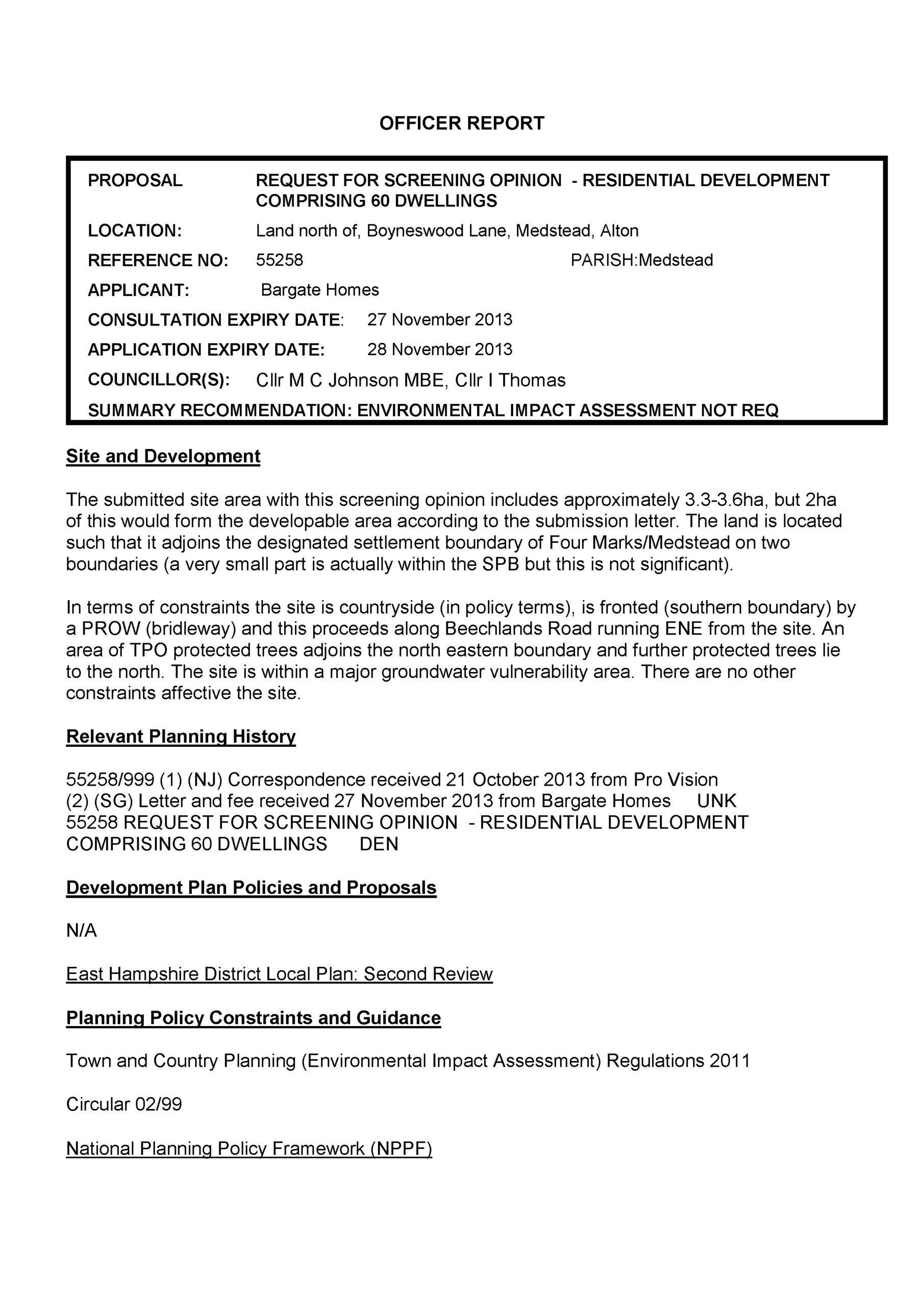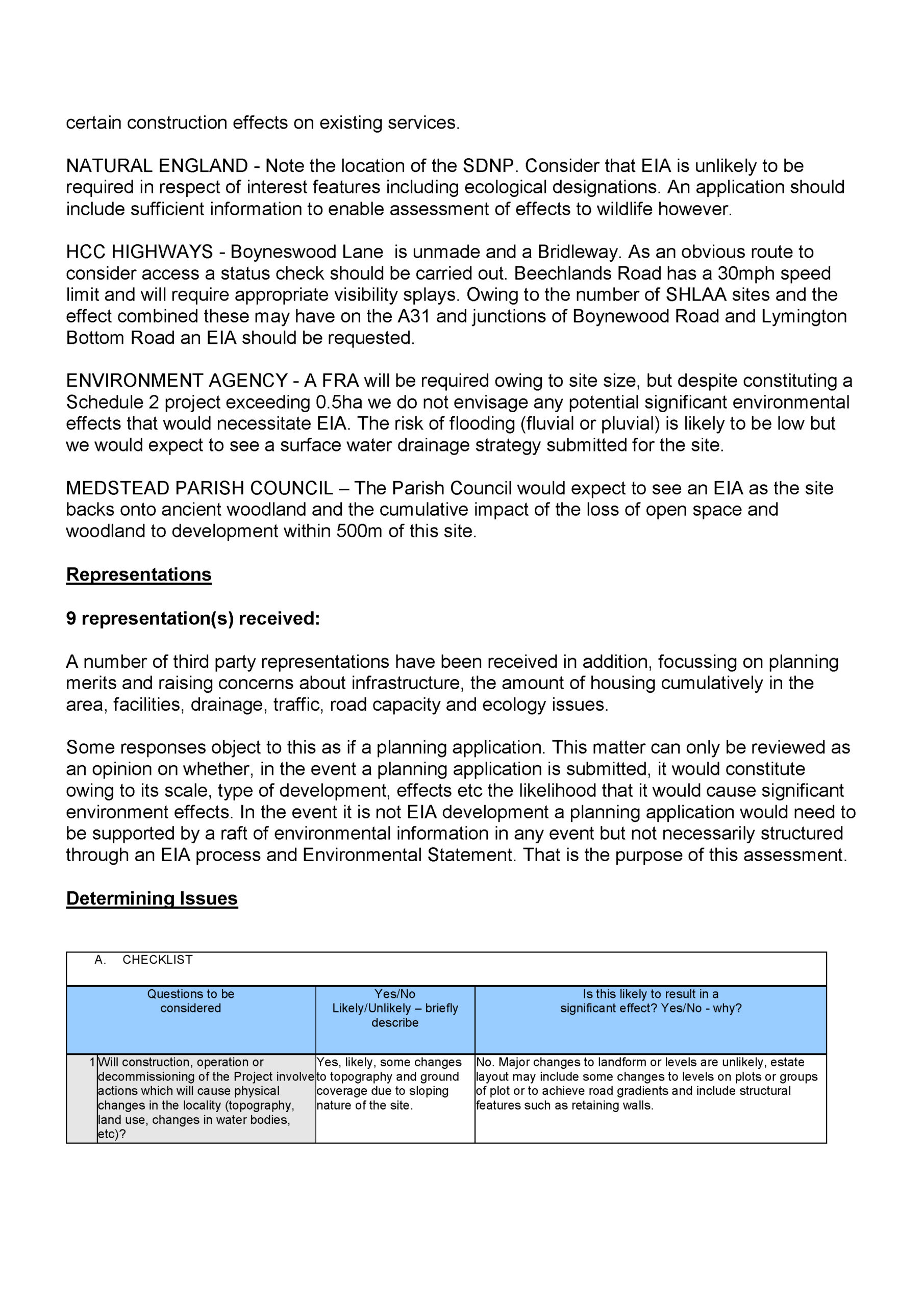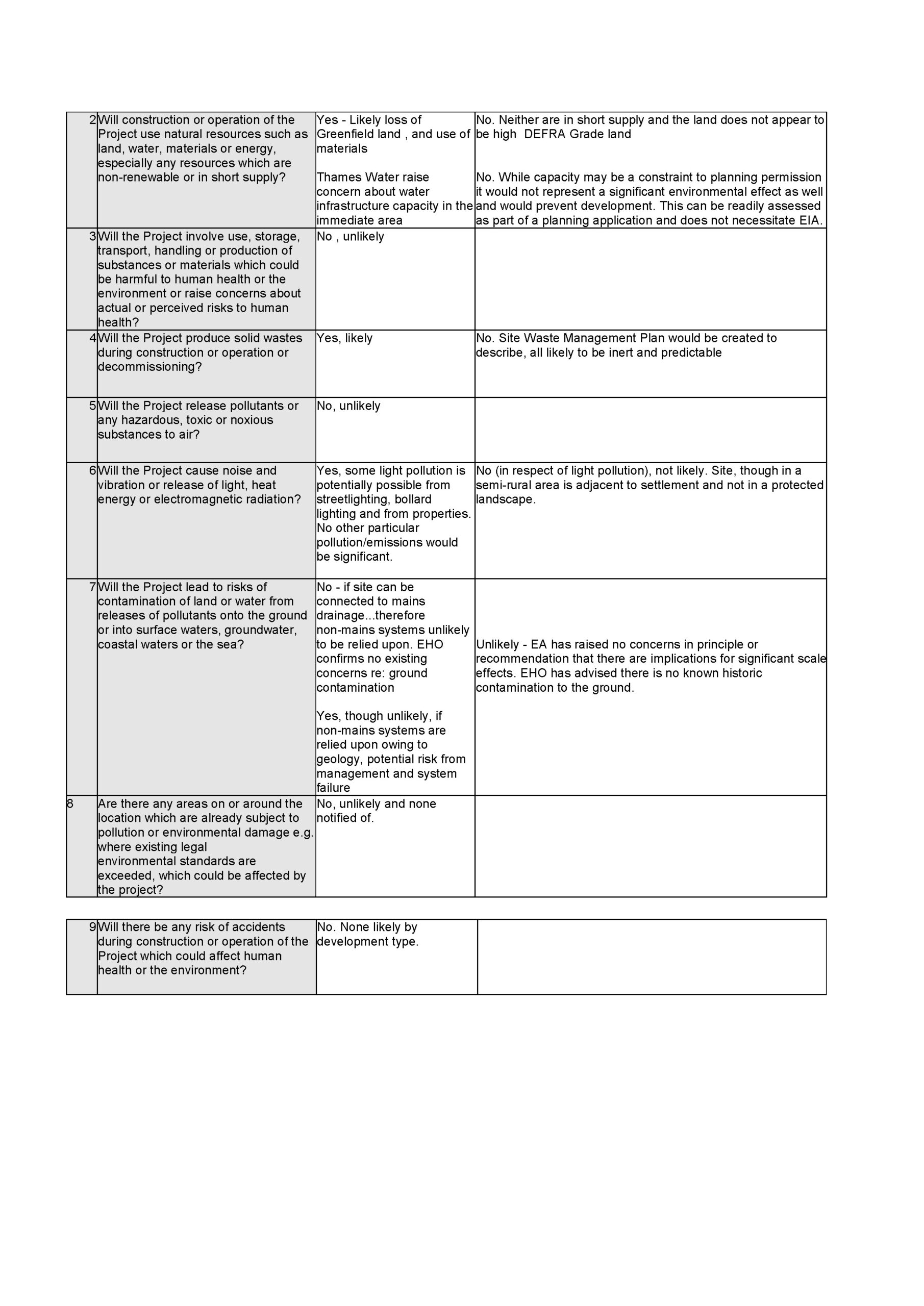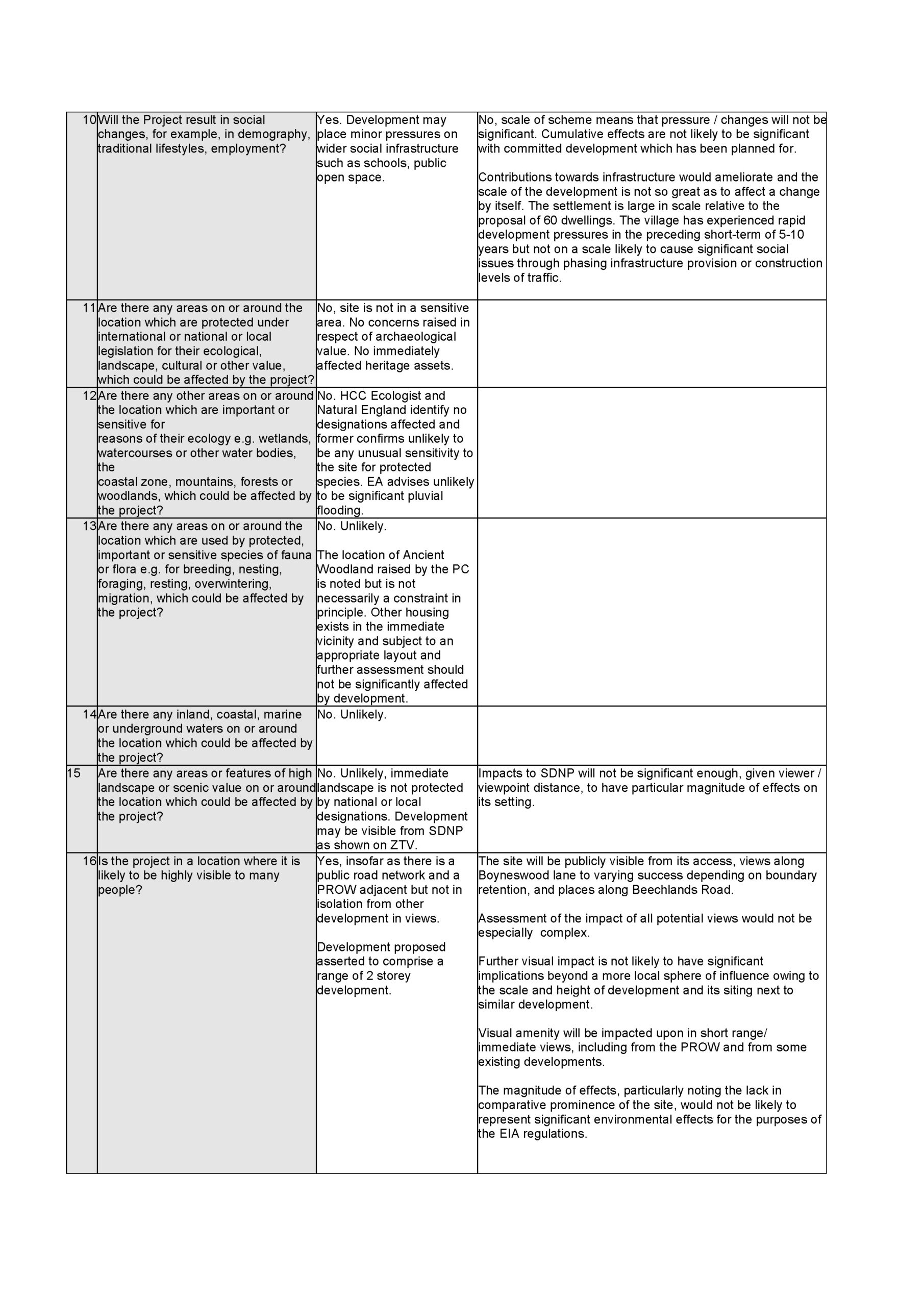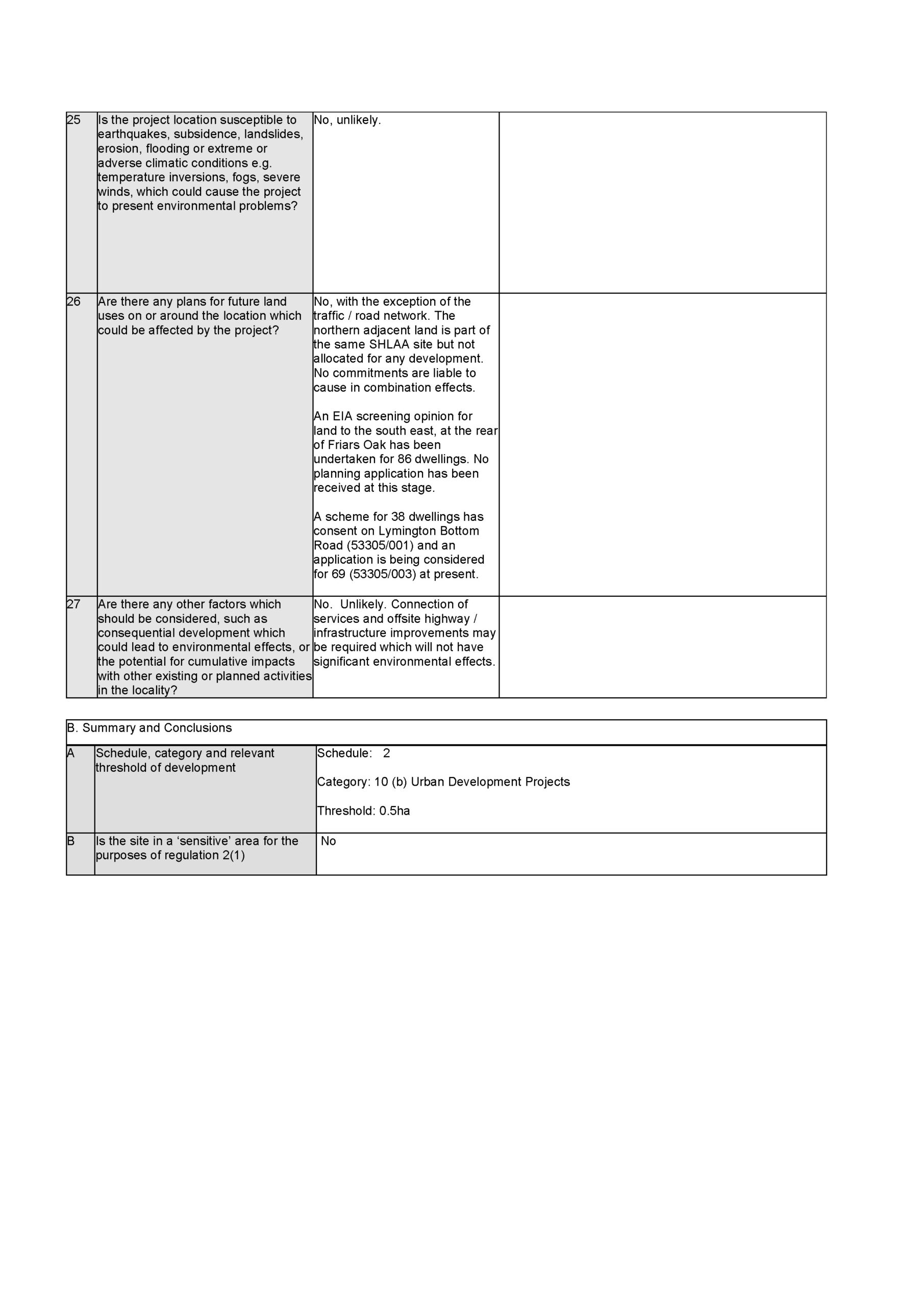⚖️ Was the EIA screening decision in 2013 (60 dwellings) lawful?
✅ Legally it was a Schedule 2 development (Category 10(b))
The site was:
- 3.3 ha, with a 2 ha developable area
- Not in a sensitive area (as per 2011 Regs at the time)
- Exceeded the 0.5 ha threshold → Screening was mandatory
👉 EHDC did carry out a screening opinion — ✅ this part is procedurally lawful
🔎 Did EHDC properly consider environmental effects?
They did consult statutory bodies:
- Environment Agency
- HCC Highways
- Natural England
- Thames Water
- Environmental Health
📌 Several consultees noted risks:
- Flooding potential and drainage (EA + EHDC drainage)
- Noise, air quality (Environmental Health)
- Highways concern about cumulative impact (HCC Highways)
- Medstead PC specifically objected due to cumulative development pressure and loss of open space/woodland
But…
⚠️ Critical Weakness in the Screening Decision: Cumulative Impact Was Dismissed
EHDC acknowledges that:
“The village has experienced rapid development pressures in the preceding short-term of 5–10 years but not on a scale likely to cause significant social issues…”
And:
“A full TA will be required… but crucially for the purposes of the 2011 Regulations only committed developments can be considered in screening.”
👉 This is the legal weak point:
❌ EHDC’s interpretation of “committed development” was narrow and conservative
- They dismissed wider growth because the other SHLAA sites weren’t yet consented
- They ignored local-scale saturation, even though HCC Highways and the Parish Council both warned about cumulative pressure
💣 Conclusion: Was the 2013 screening opinion lawful?
- Procedurally: Yes — screening was carried out, consultees were asked.
- Substantively: ⚠️ Weak, potentially vulnerable to challenge today:
- Because EHDC relied too heavily on the absence of “committed” status for nearby schemes, rather than assessing the real risk of cumulative impact
- They did not apply Schedule 3 criteria dynamically, as later clarified in case law like Loader v Rother DC [2015]

